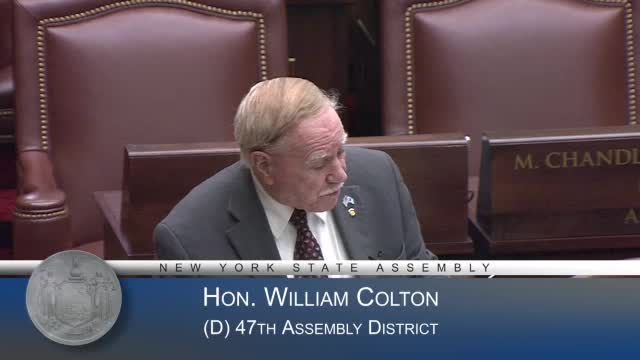New York MTA to notify riders within 24 hours of bedbug infestations
May 15, 2025 | 2025 Legislature NY, New York
This article was created by AI summarizing key points discussed. AI makes mistakes, so for full details and context, please refer to the video of the full meeting. Please report any errors so we can fix them. Report an error »

The New York Legislature convened on May 15, 2025, to discuss a proposed bill aimed at enhancing transparency regarding bedbug infestations on public transportation operated by the Metropolitan Transportation Authority (MTA). The bill mandates that the MTA inform customers of any bedbug infestations on subways, trains, and buses within 24 hours of discovery, utilizing existing communication channels such as their website, email, and text alerts.
During the session, lawmakers raised several questions about the bill's implications and effectiveness. The bill's sponsor clarified that the MTA already has systems in place for mass notifications, which can be used to alert riders about various issues, including delays and service interruptions. However, concerns were voiced regarding the lack of specificity in notifications. For instance, the bill does not require the MTA to disclose which specific train car or bus line was affected by the infestation, potentially leaving riders uncertain about their safety.
Several legislators expressed skepticism about the bill's ability to genuinely protect riders. They argued that simply notifying the public of a bedbug issue without detailed information could lead to unnecessary panic and may not effectively prevent infestations in homes or businesses. Questions were also raised about the potential financial implications for the MTA, with some lawmakers worried that increased transparency might discourage ridership and impact revenue.
The discussion highlighted the broader context of bedbug issues in New York City, where a significant number of infestations have been reported in recent years. The bill's sponsor emphasized the importance of transparency in building public trust and ensuring that riders are informed about potential health risks. However, critics pointed out that without specific details, the notifications might serve more to protect the MTA from liability than to safeguard the public.
As the bill moves forward, it remains to be seen how the MTA will implement these notifications and whether additional measures will be considered to enhance rider safety and confidence in public transportation. The legislature's ongoing discussions reflect a balancing act between transparency, public health, and the operational realities of managing a vast transit system.
During the session, lawmakers raised several questions about the bill's implications and effectiveness. The bill's sponsor clarified that the MTA already has systems in place for mass notifications, which can be used to alert riders about various issues, including delays and service interruptions. However, concerns were voiced regarding the lack of specificity in notifications. For instance, the bill does not require the MTA to disclose which specific train car or bus line was affected by the infestation, potentially leaving riders uncertain about their safety.
Several legislators expressed skepticism about the bill's ability to genuinely protect riders. They argued that simply notifying the public of a bedbug issue without detailed information could lead to unnecessary panic and may not effectively prevent infestations in homes or businesses. Questions were also raised about the potential financial implications for the MTA, with some lawmakers worried that increased transparency might discourage ridership and impact revenue.
The discussion highlighted the broader context of bedbug issues in New York City, where a significant number of infestations have been reported in recent years. The bill's sponsor emphasized the importance of transparency in building public trust and ensuring that riders are informed about potential health risks. However, critics pointed out that without specific details, the notifications might serve more to protect the MTA from liability than to safeguard the public.
As the bill moves forward, it remains to be seen how the MTA will implement these notifications and whether additional measures will be considered to enhance rider safety and confidence in public transportation. The legislature's ongoing discussions reflect a balancing act between transparency, public health, and the operational realities of managing a vast transit system.
View full meeting
This article is based on a recent meeting—watch the full video and explore the complete transcript for deeper insights into the discussion.
View full meeting
